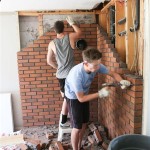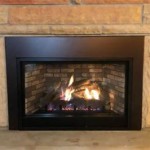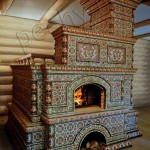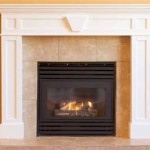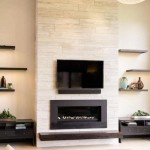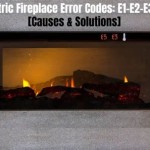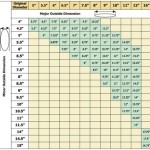Wood Fireplace Insert Replacement Parts: A Comprehensive Guide
Wood fireplace inserts offer an efficient and aesthetically pleasing way to heat a home. Over time, however, the intense heat and regular use can lead to wear and tear on various components. Identifying and replacing these parts is crucial for maintaining the insert's performance, efficiency, and safety. This article provides a detailed overview of common wood fireplace insert replacement parts, factors contributing to their deterioration, and considerations for selecting suitable replacements.
Understanding the Importance of Timely Replacement
The lifespan of a wood fireplace insert depends significantly on the quality of its components and the frequency of use. Regular inspections and prompt replacement of worn or damaged parts are paramount. Neglecting maintenance can result in decreased heating efficiency, increased fuel consumption, potential safety hazards, and ultimately, a more costly overall repair. Furthermore, operating an insert with damaged components can compromise the structural integrity of the appliance and potentially lead to fire hazards.
The impact of timely replacement extends beyond immediate cost savings. A well-maintained insert burns fuel more efficiently, reducing emissions and contributing to a cleaner environment. A properly functioning unit also minimizes the risk of carbon monoxide leaks, safeguarding the health and safety of the occupants. Therefore, proactive maintenance and component replacement are essential elements of responsible ownership.
Common Wood Fireplace Insert Replacement Parts
Wood fireplace inserts comprise numerous individual components, each with a specific function. Some parts are more prone to wear and tear than others due to their direct exposure to heat or mechanical stress. The following sections detail some of the most frequently replaced components.
Firebrick and Refractory Panels: These are essential for protecting the metal casing of the insert from the intense heat of the fire. They are typically made from a heat-resistant material like fireclay or a ceramic composite. Over time, firebrick and refractory panels can crack, crumble, or warp due to the extreme temperature fluctuations. Cracks, even small ones, can compromise their insulative properties and allow excessive heat to reach the outer casing, potentially damaging surrounding materials or creating a fire hazard. Replacement firebrick should be of the same dimensions and material as the original to ensure proper fit and heat resistance. Refractory panels, often used on the back and sides of the firebox, should also be replaced when damaged to maintain efficient heat reflection and insulation.
Gaskets and Seals: Gaskets and seals are used to create airtight connections between various components of the insert, such as the door, glass, and flue collar. These seals are typically made from materials like fiberglass, ceramic fiber, or silicone. Over time, they can become brittle, cracked, or compressed due to heat and age, leading to air leaks. Air leaks reduce the efficiency of the insert by allowing uncontrolled air into the firebox, which cools the combustion process and increases fuel consumption. Replacing damaged gaskets and seals is crucial for maintaining optimal performance and preventing the escape of smoke and gases into the living space. When replacing gaskets, it is essential to use the correct type and size recommended by the manufacturer to ensure a proper seal.
Blower Motors: Many wood fireplace inserts utilize blower motors to circulate heated air into the room, increasing the insert's heating effectiveness. Blower motors can fail due to overheating, dust accumulation, or general wear and tear. Symptoms of a failing blower motor include reduced airflow, unusual noises, or complete failure to operate. When replacing a blower motor, it is essential to select a replacement with the same voltage, horsepower, and airflow rating as the original. A properly functioning blower motor can significantly improve the insert's heating performance and distribute heat more evenly throughout the room.
Door Glass: The door glass allows for viewing the fire while also providing a barrier against sparks and embers. Over time, the glass can become cracked, stained, or cloudy due to exposure to high temperatures and soot. Replacing cracked or broken door glass is essential for safety and aesthetic reasons. When replacing the glass, it is crucial to use tempered glass specifically designed for high-temperature applications. The glass should also be the correct size and thickness to ensure a proper fit and seal. Worn seals around the glass should also be replaced to prevent air leaks and maintain efficient combustion.
Air Controls: The air controls regulate the amount of air entering the firebox, which affects the burn rate and heat output. These controls can become stiff, damaged, or inoperable over time due to corrosion, soot accumulation, or mechanical wear. Replacing or repairing damaged air controls is essential for maintaining proper combustion and controlling the heat output of the insert. A malfunctioning air control can lead to inefficient burning, excessive smoke production, or difficulty in starting and maintaining a fire.
Flue Collars and Connectors: The flue collar is the connection point between the insert and the chimney flue. Over time, flue collars and connectors can become corroded or damaged due to exposure to high temperatures and acidic flue gases. Damaged flue components can lead to leaks of smoke and carbon monoxide into the living space. Regularly inspecting the flue collar and connectors for signs of corrosion or damage is crucial, and any necessary repairs or replacements should be performed promptly.
Baffles: Baffles are strategically placed metal or ceramic components within the firebox that help to improve combustion efficiency by directing the flow of hot gases. They increase the residence time of the gases in the firebox, allowing them to burn more completely. Baffles can become damaged or warped over time due to the intense heat. Replacing damaged baffles is important for maintaining optimal combustion efficiency and reducing emissions. Replacement baffles should be the same size and shape as the originals to ensure proper airflow and combustion.
Factors Contributing to Component Deterioration
Several factors contribute to the deterioration of wood fireplace insert components. Understanding these factors can help homeowners take steps to prolong the lifespan of their inserts and minimize the need for frequent replacements.
High Temperatures and Thermal Cycling: The extreme temperatures generated by wood-burning fires are a primary cause of component wear. Frequent temperature fluctuations, known as thermal cycling, can also accelerate the deterioration of materials, leading to cracking, warping, and weakening of components. Using the insert within its designed heat output range and avoiding excessively large or hot fires can help mitigate the effects of high temperatures and thermal cycling.
Ash and Soot Accumulation: The accumulation of ash and soot within the firebox and flue can contribute to corrosion and reduced efficiency. Ash can be corrosive, especially when it contains high levels of chlorides or sulfates. Soot can insulate components, preventing proper heat transfer and leading to overheating. Regular cleaning of the firebox and chimney flue is essential for preventing ash and soot buildup and maintaining optimal performance.
Fuel Quality: The type of wood burned can significantly impact the lifespan of the insert components. Burning wet or unseasoned wood produces more smoke and creosote, which can accelerate corrosion and increase the risk of chimney fires. Burning treated or painted wood can release harmful chemicals that can damage the insert and pose health risks. Using only seasoned, untreated firewood is crucial for maintaining the insert's performance and safety.
Lack of Maintenance: Neglecting regular maintenance, such as cleaning, inspecting, and servicing the insert, can accelerate the deterioration of its components. Regular inspections can help identify potential problems early on, allowing for timely repairs and preventing more extensive damage. Following the manufacturer's recommended maintenance schedule is essential for prolonging the lifespan of the insert and ensuring safe operation.
Selecting Suitable Replacement Parts
When replacing wood fireplace insert components, it is crucial to select suitable replacements that meet the manufacturer's specifications and quality standards. Using incorrect or substandard parts can compromise the insert's performance, efficiency, and safety.
Consulting the Manufacturer's Manual: The manufacturer's manual is the best source of information for identifying the correct replacement parts for a specific insert model. The manual typically includes detailed diagrams and part numbers for all of the insert's components. Following the manufacturer's recommendations ensures that the replacement parts are compatible and meet the required performance standards.
Purchasing from Reputable Suppliers: It is important to purchase replacement parts from reputable suppliers who specialize in wood fireplace insert components. Reputable suppliers typically offer high-quality parts that meet or exceed the manufacturer's specifications. They can also provide expert advice and support to help homeowners select the correct replacement parts for their inserts. Avoid purchasing parts from unknown or unreliable sources, as these parts may be of poor quality and may not be compatible with the insert.
Considering Aftermarket Options: In some cases, aftermarket replacement parts may be available that offer improved performance or durability compared to the original parts. However, it is important to carefully evaluate aftermarket options before purchasing them to ensure that they are compatible with the insert and meet the required safety standards. Look for aftermarket parts that have been tested and certified by independent organizations. Be wary of aftermarket parts that are significantly cheaper than the original parts, as these may be of inferior quality.
Seeking Professional Assistance: If unsure about selecting or installing replacement parts, seeking assistance from a qualified wood fireplace insert technician is advisable. A technician can properly diagnose the problem, identify the correct replacement parts, and install them safely and correctly. Professional installation ensures that the replacement parts are properly fitted and that the insert is operating safely and efficiently.
Proper selection and installation of wood fireplace insert replacement parts are crucial for maintaining the appliance's optimal performance, efficiency, and safety. By understanding the common replacement parts, factors contributing to their deterioration, and considerations for selecting suitable replacements, homeowners can ensure the longevity and reliable operation of their wood fireplace inserts.

Wood Burning Fireplace Inserts Insert Installation

Rais 60 Insert Wood Fireplace For

Enviro Replacement Parts Friendly Fires

Premium Wood Fireplace Inserts Made In Usa Lopi Stoves

Flush Wood Plus Insert Rect Eau Claire Hearth

Regency Blower Kit Wood Inserts I2400m I2450m I2500m 142 917

Fireplace Insert Guide Fireplaces Direct Learning Center

Why A Wood Burning Fireplace Insert Bethesda Md Service

Hei240 Wood Inserts Line Olympia Chimney

Fireplaces Inserts Wood Gas Fireplace Xtrordinair
Related Posts

